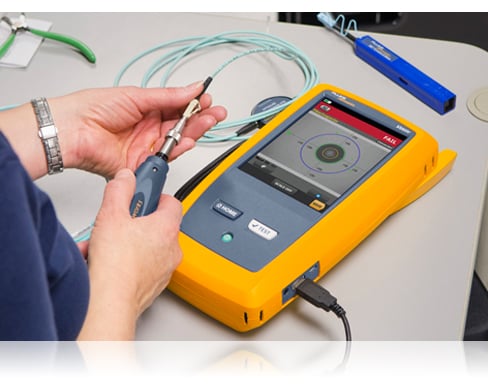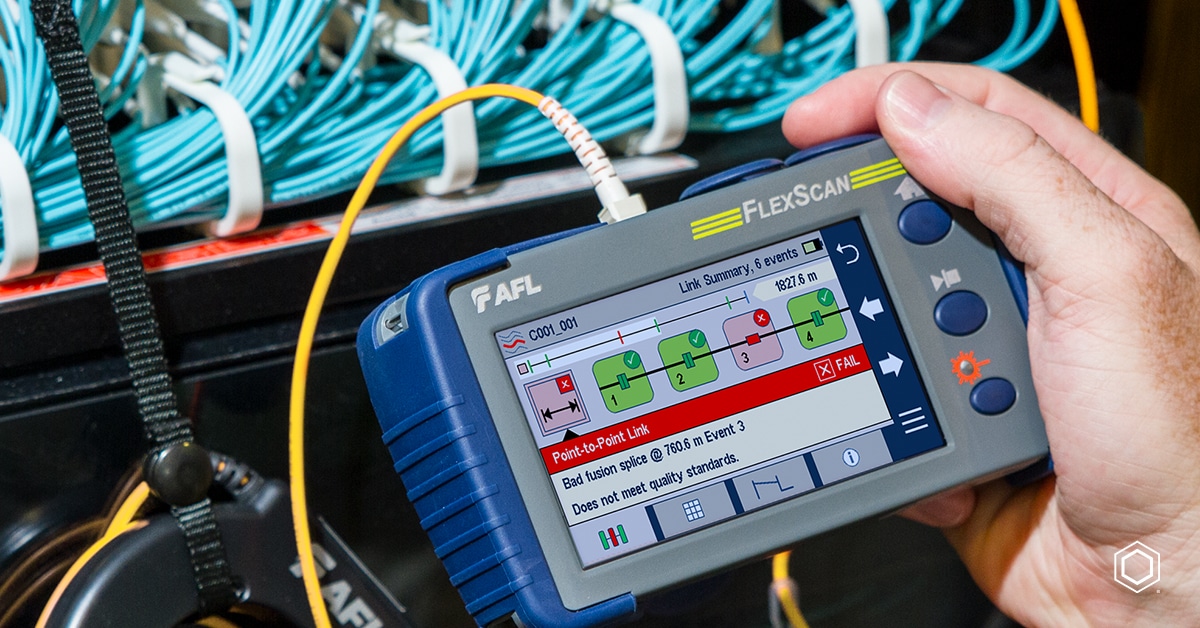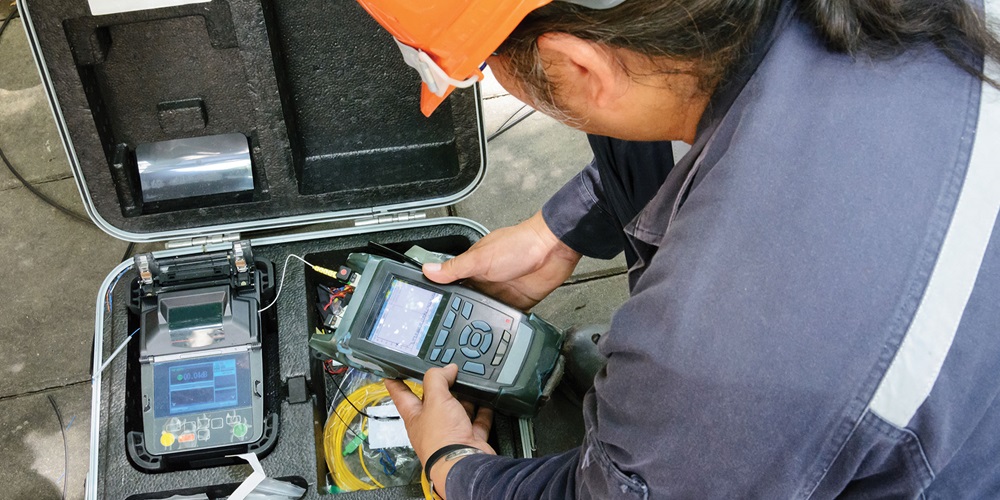The latest optical fibre testing equipment enhances troubleshooting and diagnostics in telecommunications.
The latest optical fibre testing equipment enhances troubleshooting and diagnostics in telecommunications.
Blog Article
Discover the Importance of Optical Fibre Screening in Modern Telecommunications
In the realm of modern telecoms, the significance of optical fiber screening can not be overemphasized, as it acts as the backbone for ensuring network dependability and efficiency. By implementing routine testing methods, operators can preemptively determine prospective issues such as signal degradation, thus guarding against disruptions that could verify pricey. Advanced techniques like Optical Time-Domain Reflectometry play a critical duty in this procedure, yet several might ignore the wider implications of these methods. What are the specific advantages that routine screening offers, and just how might it shape the future landscape of telecommunications?

Recognizing Optical Fiber Testing
Optical fibre screening is an essential procedure in telecommunications that makes certain the stability and performance of fibre optic networks. This testing encompasses an array of procedures designed to examine the physical and functional characteristics of optical fibres - optical fibre diameter analyser. Secret specifications assessed include optical power loss, data transfer ability, and fault area, which are important for keeping top quality interaction web links
The screening procedure usually includes using specialized tools such as Optical Time-Domain Reflectometers (OTDR) and Optical Power Meters. OTDRs are employed to identify and identify faults, entwines, and adapters within the fibre, while power meters determine the transmitted light signal stamina to identify performance.
Furthermore, testing is performed at numerous phases, including throughout installment, upkeep, and troubleshooting, to make certain that the network meets market criteria and functional requirements. Conformity with standards established by companies like the International Telecommunication Union (ITU) and the Telecommunications Industry Organization (TIA) is extremely important.
Benefits of Normal Evaluating
Normal testing of optical fibers yields many benefits that significantly boost network dependability and performance. Among the primary benefits is the very early discovery of prospective concerns, such as breaks or deterioration in the fibre, which can bring about pricey downtime if left unaddressed (robotic vision). By determining these problems proactively, telecoms service providers can reduce service disruptions and make certain constant connection for their clients
Additionally, regular screening helps to keep the stability of signal quality. As optical fibers age, their efficiency can be impacted by aspects such as environmental problems and physical stress and anxiety. Routine evaluations permit the monitoring of signal loss and general transmission effectiveness, guaranteeing that the network operates at ideal levels.
An additional substantial benefit is conformity with market criteria. Regular testing sustains adherence to regulatory demands, thereby minimizing lawful and financial risks related to non-compliance. Furthermore, it enhances the overall lifespan of the fiber facilities by promoting prompt upkeep and repair work.

Common Evaluating Techniques
Evaluating optical fibres uses different approaches to ensure the integrity and performance of telecommunications networks. Among the most usual methods is Optical Time Domain Reflectometry (OTDR), which examines the whole size of the fiber by sending a pulse of light and measuring the representations brought on by blemishes or breaks. This method provides comprehensive information concerning the area and seriousness of mistakes.
Another widespread method is the usage of Optical Power Meters, which determine the amount of light transmitted via the fiber. This strategy assists establish the loss of signal strength, guaranteeing that it meets sector standards. In Addition, Aesthetic Mistake Locators (VFL) are utilized to determine breaks or severe bends in the fiber by predicting a noticeable laser light into the cable television.
Insertion loss testing is likewise important, as it evaluates the loss of signal power arising from connections and interlaces within the network. The use of Polarization Mode Dispersion (PMD) screening analyzes the influence of fibre features on signal stability.
Each of these approaches plays a crucial role in preserving the efficiency and reliability of optical fiber networks, eventually contributing to seamless telecommunications operations.
Effect On Network Efficiency
The honesty and performance of optical fiber networks directly influence general network performance. In modern-day telecommunications, the performance of information transmission counts heavily on the high quality of the optical fibers used. Any type of degradation in the fibre's condition-- whether because of physical damages, contamination, or excessive flexing-- can cause boosted attenuation and signal loss, dramatically affecting information integrity and rate.
Normal optical fibre testing is vital to identify and rectify prospective issues before they materialize as network failings or slowdowns. Methods such as Optical Time Domain Name Reflectometry (OTDR) and insertion loss testing enable professionals to gauge the efficiency of fibre links precisely. These examinations not only assess the physical condition of the fibres however also guarantee compliance with sector standards, thereby protecting the network's reliability.
Moreover, a well-maintained optical fibre network contributes to lowered functional costs and improved customer satisfaction, as end-users experience fewer disruptions and higher information rates. Inevitably, the emphasis on extensive optical fiber screening techniques works as a cornerstone for maintaining durable telecommunications infrastructure, making certain that company can satisfy the expanding demands for bandwidth and connection in today's blog here digital age.
Future Trends in Evaluating
As we look ahead, improvements in innovation are poised to improve optical fibre screening in useful content telecommunications. The increase of automation and man-made intelligence (AI) is expected to enhance the efficiency and accuracy of testing procedures. Automated testing systems can conduct thorough assessments with very little human intervention, considerably reducing the capacity for mistakes and speeding up time-to-deployment.
In addition, the assimilation of device understanding formulas will certainly enable predictive upkeep, enabling network carriers to foresee prospective problems prior to they intensify into failures. This positive technique not only boosts network integrity but also optimizes operational prices.
An additional emerging trend is the development of portable screening tools that use real-time evaluation - optical fibre diameter analyser. These devices will certainly encourage technicians to execute on-site diagnostics rapidly, promoting quicker resolutions and improving solution top quality
The expansion of 5G networks further demands the evolution of screening approaches. As bandwidth demands raise, conventional testing methods may no much longer are adequate. Ingenious solutions such as optical time-domain reflectometry (OTDR) and progressed spooky evaluation will certainly become vital in ensuring the stability and efficiency of high-speed connections.

Verdict
To conclude, optical fibre testing is crucial for making certain the stability and dependability of modern telecoms networks. Routine screening techniques not only help identify possible concerns such as signal loss and mistakes but likewise add to improved network efficiency and consumer contentment. As the demand for smooth connectivity look at more info remains to grow, the adoption of sophisticated screening approaches will play a vital role in keeping high-grade network criteria and supporting the progressing landscape of telecommunications.
Report this page